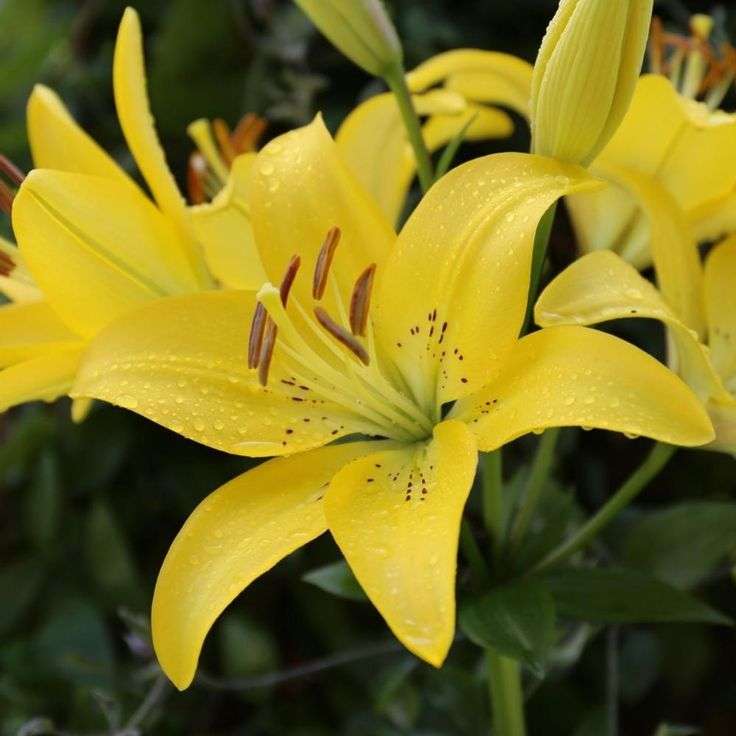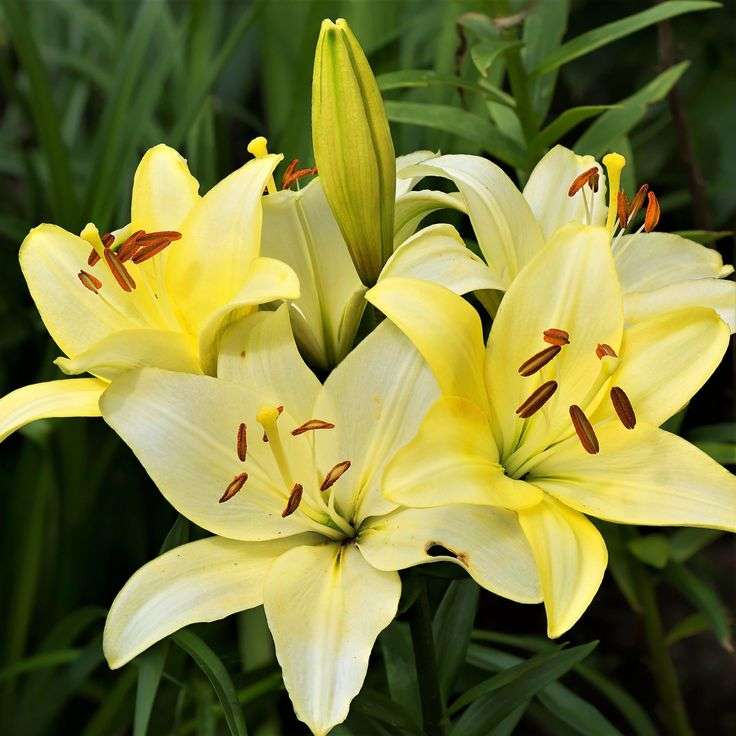





Lilium Asiatic - Yellow - 5 bulbs p-pack
Check my rate
| Main centres: | 1-3 business days |
| Regional areas: | 3-4 business days |
| Remote areas: | 3-5 business days |






| Main centres: | 1-3 business days |
| Regional areas: | 3-4 business days |
| Remote areas: | 3-5 business days |
Lilium Asiatic 'Yellow' is a vibrant and cheerful lily known for its bright yellow trumpet-shaped flowers. This lily variety is early-blooming and is well-suited for gardens in South Africa, bringing a splash of color to borders, beds, and containers. Asiatic lilies are also hardy and easy to grow, making them a great option for both beginner and seasoned gardeners.
Climate:
Thrives in moderate to temperate climates with cool to mild winters and moderate summers.
Suitable for regions like Western Cape, KwaZulu-Natal, Eastern Cape, and Gauteng.
Can tolerate light frost but prefers mild winter temperatures for best growth.
Sunlight:
Prefers full sun but can tolerate partial shade.
Needs at least 6 hours of direct sunlight daily for strong growth and vibrant blooms.
In warmer climates, afternoon shade can help protect the plant from heat stress.
Soil Requirements:
Prefers well-draining, loamy soil rich in organic matter.
pH: 6.0—7.0 (slightly acidic to neutral).
Ensure the soil remains moist but does not become waterlogged, which can lead to bulb rot.
Best Planting Time:
Autumn (April—May) or early spring (August—September) for mid to late summer flowering (December—February).
Depth & Spacing:
Plant bulbs 10—15 cm deep and 20—30 cm apart.
The depth ensures the bulbs are stable and encourages proper root growth.
Proper spacing helps with air circulation, reducing the risk of fungal diseases.
Container Growing:
Lilium Yellow is suitable for large pots (30 cm deep or more) with well-draining soil.
Ensure the container has drainage holes to avoid waterlogging.
Use a light, well-draining potting mix to support healthy root growth.
Watering:
Water regularly, keeping the soil moist but not soggy.
Water thoroughly but allow the soil to dry out slightly between waterings to prevent root rot.
Reduce watering after flowering as the plant enters dormancy in late summer or early autumn.
Fertilizing:
At planting: Use a slow-release bulb fertilizer (e.g., 10-10-10 or 5-10-10) to help support root development.
During growth: Apply a balanced liquid fertilizer every 2 weeks to encourage healthy foliage and strong blooms.
After flowering: Use a potassium-rich fertilizer to promote strong bulb growth for the following year.
Mulching:
Apply a 5 cm layer of mulch (organic materials like bark, straw, or compost) around the base to help retain moisture and regulate soil temperature.
Mulch also helps to suppress weeds and keep the roots cool in warmer months.
Bloom Time:
Blooms in mid to late summer (December—February).
Produces vibrant yellow trumpet-shaped flowers that stand out in the garden.
After Flowering Care:
Deadhead spent flowers to prevent seed formation and encourage better bulb development.
Allow the foliage to die back naturally—don't cut it too early, as the leaves store energy for the bulbs.
Reduce watering once the plant enters dormancy.
Lifting & Storing Bulbs (Optional):
In regions with wet winters, you may choose to lift the bulbs after they've gone dormant. Store them in a cool, dry place (10—12°C) until replanting in autumn.
Support Needed:
Asiatic lilies like the Yellow variety generally grow to 50—90 cm in height, so they may not need heavy staking.
If needed, provide light support with bamboo stakes or plant supports to keep the stems upright, especially in windy conditions.
Common Pests:
Aphids, thrips, and lily beetles can affect lilies.
Use neem oil or insecticidal soap to control aphids and thrips.
Lily beetles can be removed by hand or treated with organic insecticides.
Disease Issues:
Botrytis (Grey Mold) — Prevent by ensuring good air circulation around the plants and avoiding overhead watering.
Bulb rot — Prevent by ensuring well-draining soil and avoiding overwatering, especially during dormancy.